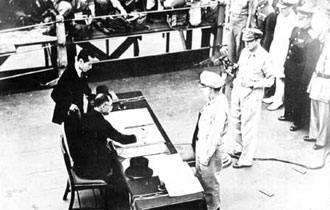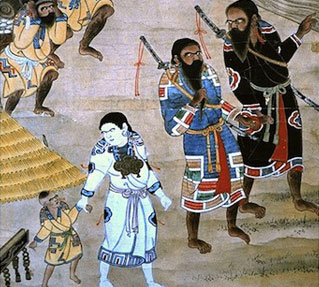sakoku
(national seclusion policy; lit. "closed country"). Policy (1639-1854) adopted by the Tokugawa shogunate (1603-1867) in an effort to legitimize and strengthen its authority, both domestically and in East Asia. The main elements of the policy were the exclusion of Roman Catholic missionaries and traders, the proscription of Christianity in Japan, the regulation of foreign trade, and the prohibition of foreign travel by Japanese. The seclusion was not total, because Dutch, Chinese, and Koreans were permitted access to Japan. However, the only Japanese port open to the Dutch and Chinese was the one at Nagasaki. All ships and Japanese subjects were forbidden to leave Japan for a foreign country without a license; and those caught doing otherwise were to be executed. With the arrival of Commodore Matthew C. Perry in 1853 the shogunate was forced to abandon its seclusion policy. National seclusion was formally brought to an end by the Kanagawa Treaty of 1854 and the Ansei Commercial Treaties of 1858. (adapted from Japan: An Illustrated Encyclopedia. Tokyo: Kodansha, 1993)
There is currently no content classified with this term.











